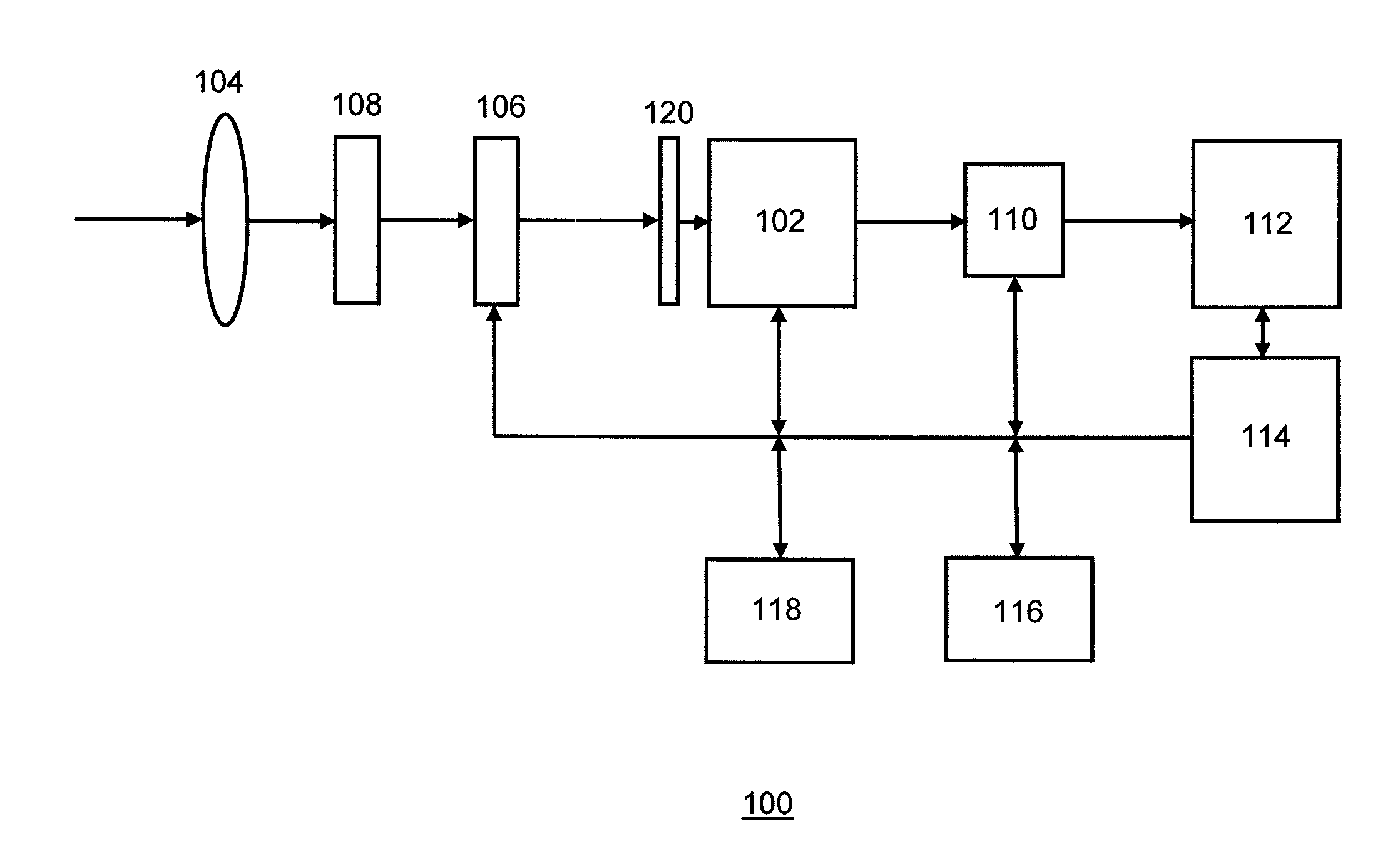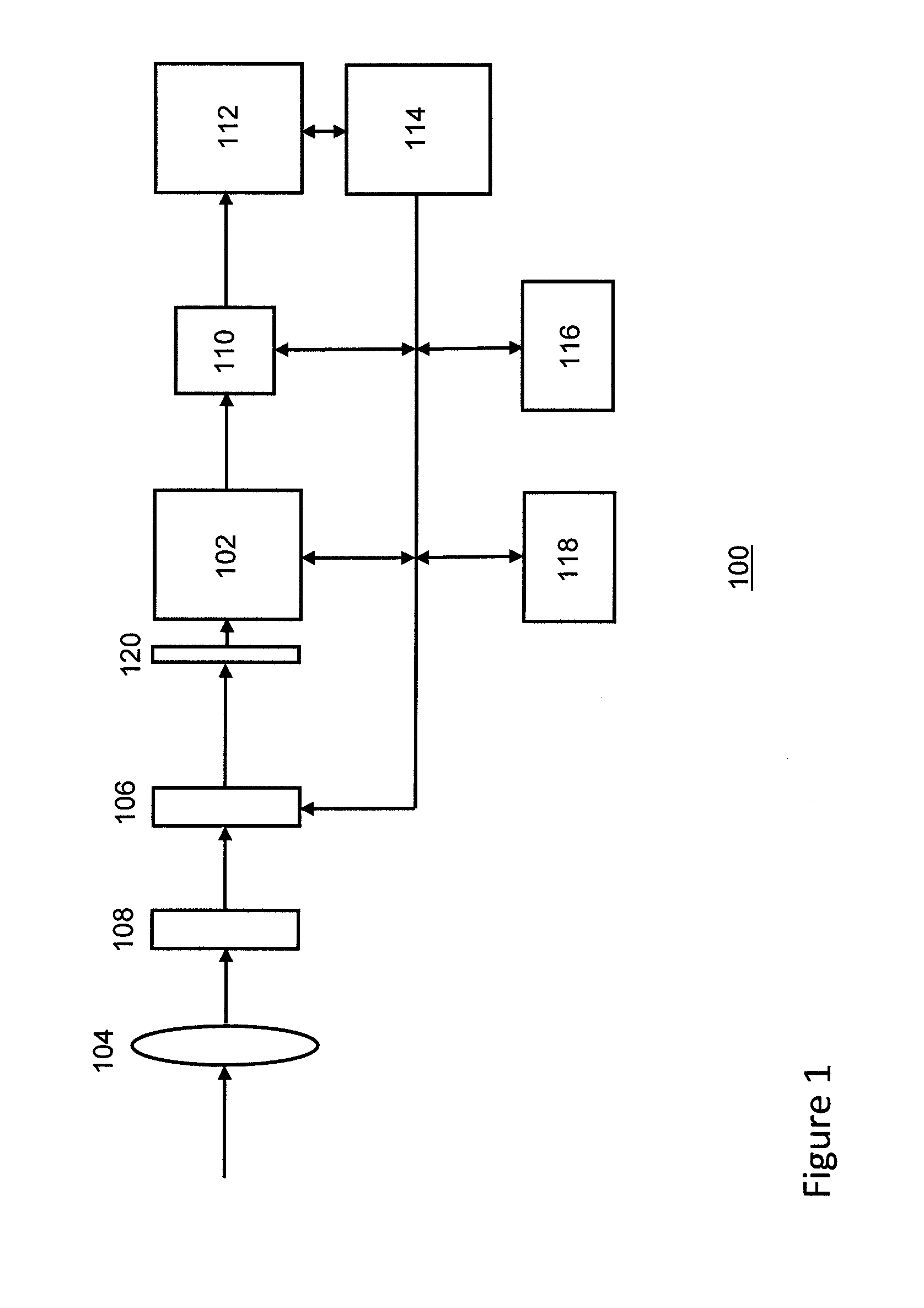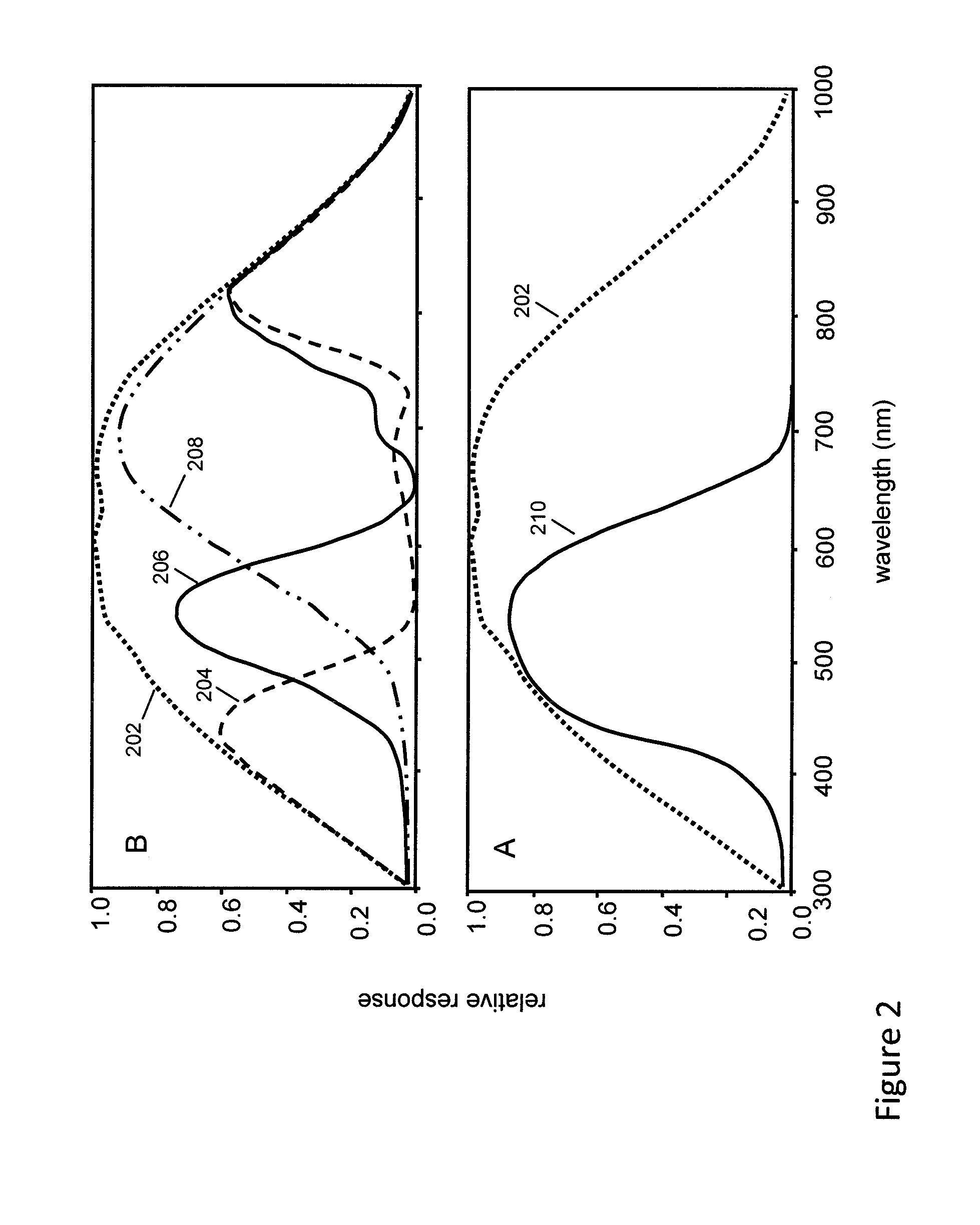Reducing noise in a color image
a color image and noise reduction technology, applied in image enhancement, television systems, instruments, etc., can solve the problems of motion blur, further degradation of snr, reduced depth of field, etc., and achieve the effect of reducing blur and efficiently eliminating the infrared componen
- Summary
- Abstract
- Description
- Claims
- Application Information
AI Technical Summary
Benefits of technology
Problems solved by technology
Method used
Image
Examples
Embodiment Construction
[0031]FIG. 1 illustrates an imaging system 100 according to one embodiment of the invention. The imaging system comprises an image sensor 102, a lens system 104 for focusing objects in a scene onto the imaging plane of the image sensor, a shutter 106 and an aperture system 108 comprising at least one aperture for allowing light (electromagnetic radiation) of the visible part (e.g. RGB) and the non-visible part (e.g. infrared) of the electromagnetic spectrum to enter the imaging system. The imaging system may be part of a digital camera or integrated in a mobile phone, a webcam and another multimedia device requiring image-capturing functionality.
[0032]The exposure of the image sensor to light is controlled by a shutter and the aperture. When the shutter is opened, the aperture controls the amount of light and the degree of collimation of the light exposing the image sensor. The shutter may be a mechanical shutter or, alternatively, the shutter may be an electronic shutter integrated...
PUM
 Login to View More
Login to View More Abstract
Description
Claims
Application Information
 Login to View More
Login to View More - R&D
- Intellectual Property
- Life Sciences
- Materials
- Tech Scout
- Unparalleled Data Quality
- Higher Quality Content
- 60% Fewer Hallucinations
Browse by: Latest US Patents, China's latest patents, Technical Efficacy Thesaurus, Application Domain, Technology Topic, Popular Technical Reports.
© 2025 PatSnap. All rights reserved.Legal|Privacy policy|Modern Slavery Act Transparency Statement|Sitemap|About US| Contact US: help@patsnap.com



